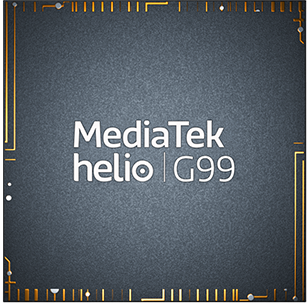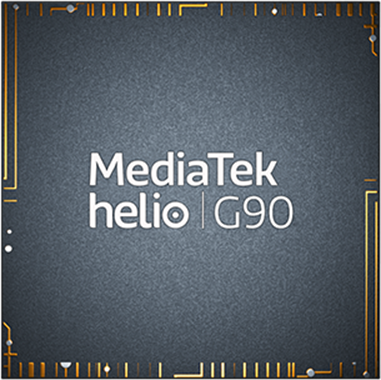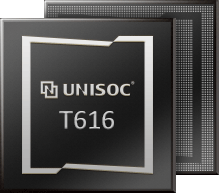Last month’s article went over popular Android Wi-Fi tablet CPUs. This month we’ll review popular CPUs with Wi-Fi and mobile data for use in custom Android tablet projects. The main difference between Android Wi-Fi tablet CPUs and mobile data equipped Android tablet CPUs is that the tablet CPUs have mobile data connectivity. Otherwise they’re the same.
Android tablet CPUs with mobile data are used in products that need internet connectivity in the absence of Wi-Fi. Custom Android devices are commonly used in third party environments, meaning the owner of the devices uses the local infrastructure, like Wi-Fi, that’s provided by a different entity. Therefore, having a backup way to connect to the internet, like mobile data, means the device won’t go offline if it can’t connect to Wi-Fi.
The decision to include mobile data functionality in a custom Android tablet should be based on the use case and use environment of the device. As a general rule, an Android device with mobile data has a higher hardware cost than one with Wi-Fi only, so there should be a reason to justify the extra cost of including it.
This CPU review focuses on popular CPUs used in custom Android tablets. Custom Android products differ from mass market retail devices in large part because custom devices don’t usually need the newest and highest performing CPUs. Customers’ primary demands of custom Android tablets include long term supply, stable performance, and reasonable pricing. For these purposes CPUs which support 5G data have a hard time competing with the lower cost and mature 4G chipsets. Most custom Android devices don’t need 5G data speeds, so this article focuses on 4G CPUs.
Now the moment you’ve been waiting for:
Certainly, here’s the updated comparison including the MediaTek MT8789:
1. MediaTek Helio G99 (MT8781) – Best Performance

- Release Date: Q2 2022
- CPU: 2x Cortex-A76 (2.2 GHz) + 6x Cortex-A55 (2.0 GHz)
- GPU: Mali-G57 MC2
- Fabrication: 6nm (power-efficient)
- Max Screen Resolution: 2520×1080 (Full HD+)
- Max Camera Resolution: 108 MP
- Max RAM: 8GB LPDDR4x (2133 MHz)
- Storage Type: UFS 2.2
- AI Performance: MediaTek APU (AI enhancements)
- Cellular Support: 4G LTE only (no 5G)
Summary: Launched in mid-2022, the Helio G99 is a mid to high-range chipset optimized for gaming, multitasking, and multimedia. With its two powerful Cortex-A76 cores and a Mali-G57 MC2 GPU, it delivers smooth performance in everyday use and gaming. The 6nm fabrication means better power efficiency and less heat compared to older 12nm chips. It supports high-resolution screens up to 2520×1080, advanced AI features, and a mega 108MP camera, making it ideal for gaming tablets, mid-range smartphones, and multitasking multimedia-focused devices. This chip supports high-refresh-rate displays, fast app loading, and extended battery life. So YUMMY!Best for: Mid-range gaming tablets, performance-focused budget smartphones, and multimedia devices.
2. MediaTek MT8789 – High Performance

- Release Date: Q2 2023
- CPU: 2x Cortex-A76 (2.6 GHz) + 6x Cortex-A55 (2.0 GHz)
- GPU: Mali-G76 MP4
- Fabrication: 12nm
- Max Screen Resolution: 2560×1600 (WQXGA)
- Max Camera Resolution: 64 MP
- Max RAM: 8GB LPDDR4x
- Storage Type: UFS 2.1
- AI Performance: Dedicated AI processing unit
- Cellular Support: 4G LTE only (no 5G)
Summary: Introduced in Q2 2023, the MediaTek MT8789 is a high-performance processor designed for upper mid-range devices. It features two Cortex-A76 cores clocked at 2.6 GHz and six Cortex-A55 cores at 2.0 GHz, providing robust performance for multitasking and demanding applications. The Mali-G76 MP4 GPU enhances gaming and graphics-intensive tasks. Despite its powerful capabilities, the 12nm fabrication process is less power efficient compared to newer 6nm technologies meaning the battery drains faster. It supports high-resolution displays up to 2560×1600 and cameras up to 64MP. However, it lacks 5G support, limiting connectivity to 4G LTE networks. This chipset is well-suited for high-end tablets and large screen smartphones focusing on performance and multimedia capabilities.
Best for: High-end tablets, performance-focused smartphones, and multimedia devices.
3. Unisoc T616 – Budget-Friendly

- Release Date: Q3 2021
- CPU: 2x Cortex-A75 (2.0 GHz) + 6x Cortex-A55 (1.8 GHz)
- GPU: Mali-G57 MP1
- Fabrication: 12nm
- Max Screen Resolution: 2400×1080 (Full HD+)
- Max Camera Resolution: 48 MP
- Max RAM: 8GB LPDDR4x
- Storage Type: UFS 2.2
- AI Performance: Basic AI processing
- Cellular Support: 4G LTE only (no 5G)
Summary: The Unisoc T616, released in late 2021, is a budget-friendly processor designed for entry-level smartphones and tablets. It has an octacore architecture featuring two Cortex-A75 performance cores and six Cortex-A55 efficiency cores. This distribution offers balanced performance for everyday tasks. The Mali-G57 MP1 GPU provides acceptable performance for casual gaming, and the UFS 2.2 storage improves app loading times. It supports Full HD+ screens and up to 48MP cameras, making it a good choice for affordable smartphones and tablets. However, it only supports 4G LTE networks and lacks 5G connectivity. It’s mainly suitable for budget conscious, low requirements applications.
Best for: Budget smartphones and tablets, social media users, and light productivity tasks.
4. MediaTek MT8786 – Likely Weakest

- Release Date: Q1 2022
- CPU: Likely Cortex-A73/A53 (exact details unclear)
- GPU: Mali-G72 (variant unknown)
- Fabrication: 12nm
- Max Screen Resolution: Likely 1920×1200 (Full HD)
- Max Camera Resolution: Likely 16-32 MP
- Max RAM: Likely 4-6GB LPDDR4x
- Storage Type: eMMC 5.1
- AI Performance: Limited AI processing
- Cellular Support: 4G LTE only (no 5G)
Summary: The MT8786 is a lower-end MediaTek chipset, released between 2021 and 2022. It appears to be based on an older Cortex-A73/A53 architecture, making it the weakest of the processors listed here. While it supports Full HD screens and decent cameras, it lacks the power efficiency and speed of the newer G99 or even the MT8788. The Mali-G72 GPU is outdated, limiting gaming performance. It is best suited for entry-level tablets that prioritize affordability over speed. eMMC 5.1 storage further slows down performance, making it less ideal for multitasking. Devices using this chip are usually budget tablets with limited capabilities, good for basic browsing and video playback but not for gaming or intensive tasks.
Best for: Entry-level tablets, budget multimedia devices, and basic productivity use.


